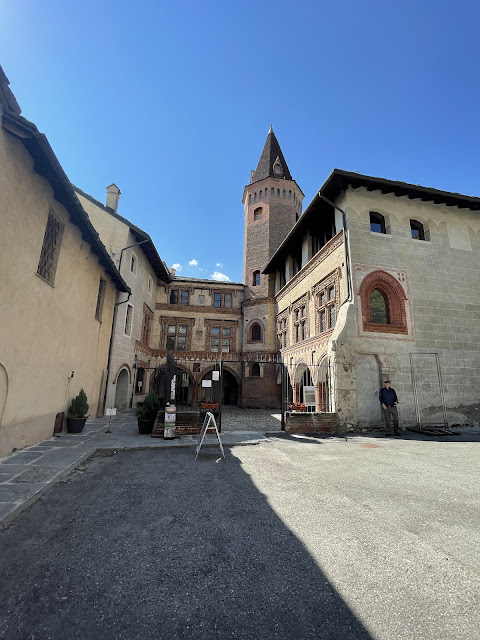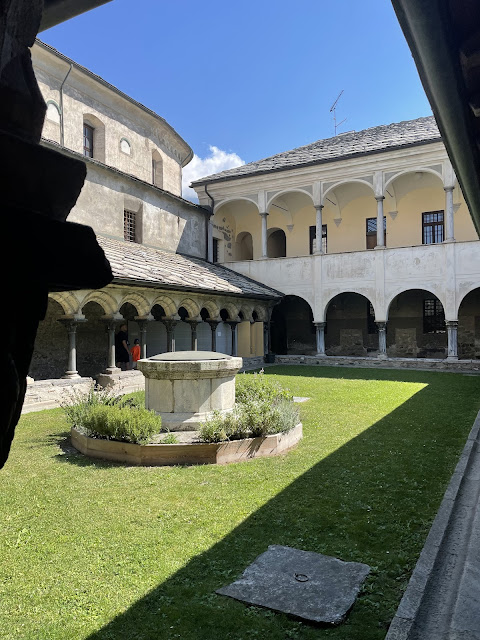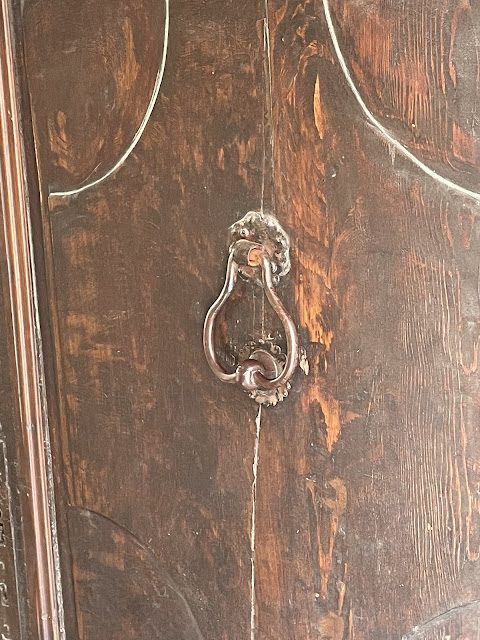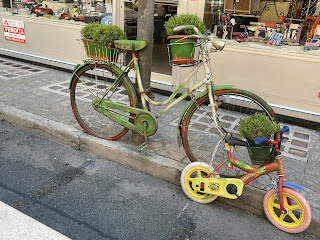July 13 Wednesday
Today is a different kind of walking day. We take the bus about 30 minutes to the town of Aosta which is also the name of the valley. It was a major cross roads in Roman times and portions of the old city walls, gates, theater and market area still exist. Leaving the city in one direction took you to France. The other to Switzerland through the little Saint Bernard's pass. The walls and gates were built in the first century and the main purpose was military as the passes had such military strategic significance. The main commerce roads in the center of town today are still those old roads.
 |
| This is the old city gate built in 25 AD and originally had a marble outer layer. They are thick enough that there was an iron gate that could be lowered in case of attack. |
 |
| This is outside of the old city walls and was built to commemorate a military victory. |
 |
| The old main gate had 3 sections. This is one of them. |
 |
| What remains of the coliseum. It held 4000 people. |
 |
| I like how you can see the mountains through the openings. |
The Aosta cathedral, like many churches has had many phases and additions. This was first built in the fourth century. Then replaced in the 11th century and dedicated to the Virgin Mary. In the 15th and 16th century it was modified. In the 1800's it was redone with the neo-classical façade that we currently see. We went down into the crypt below the church. It is small.
 |
| These are the seats for the choir. Each one has a different carving on it. The seat folds up and can be perched on when there is a long period where they need to stand. |
 |
| Each column has a different carving that depicts a bible story. The first one is of Mary giving birth to Jesus. |
There are many interesting doors and knockers along the old street.
We have lunch on our own. Linda, Chris, Suki, Nick and I all go to a pizza place that Marta and our local guide recommended. Good choice. We are to meet back at the bus station. On the way, we see most of the others of our group at a gelato place. Of course we join them and enjoy the gelato.
After returning to Cogne, we meet to have a tour of the city museum by Filipo. Filipo can trace his family heritage in the city back to 1050. He is certainly one of the influential people in the town now and owns several hotels and restaurants. He clearly, loves the history of the town and sharing it with others. There is a small, interesting museum of an old traditional house. The layout is with the animals below, storage area for grains to last through the winter, and the living quarters for the family. The ceilings are low which helps keep it warm in the winter.
From the museum, we went to one of Filipo's restaurants to see a demonstration of how to make polenta. It was almost a joke as they ceremoniously poured a package of polenta into a pot of cold water and said to let it cook for an hour and gave us a sample. We could chose if we wanted to add blue cheese to it or a hard cheese. The cheese melts when you add it to the hot polenta and is really quite tasty. We each got a bag of polenta to take home with us.



































No comments:
Post a Comment